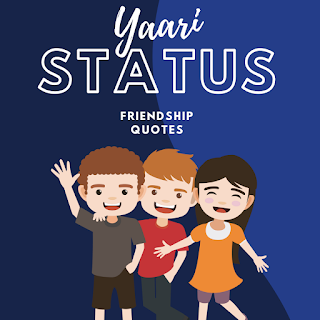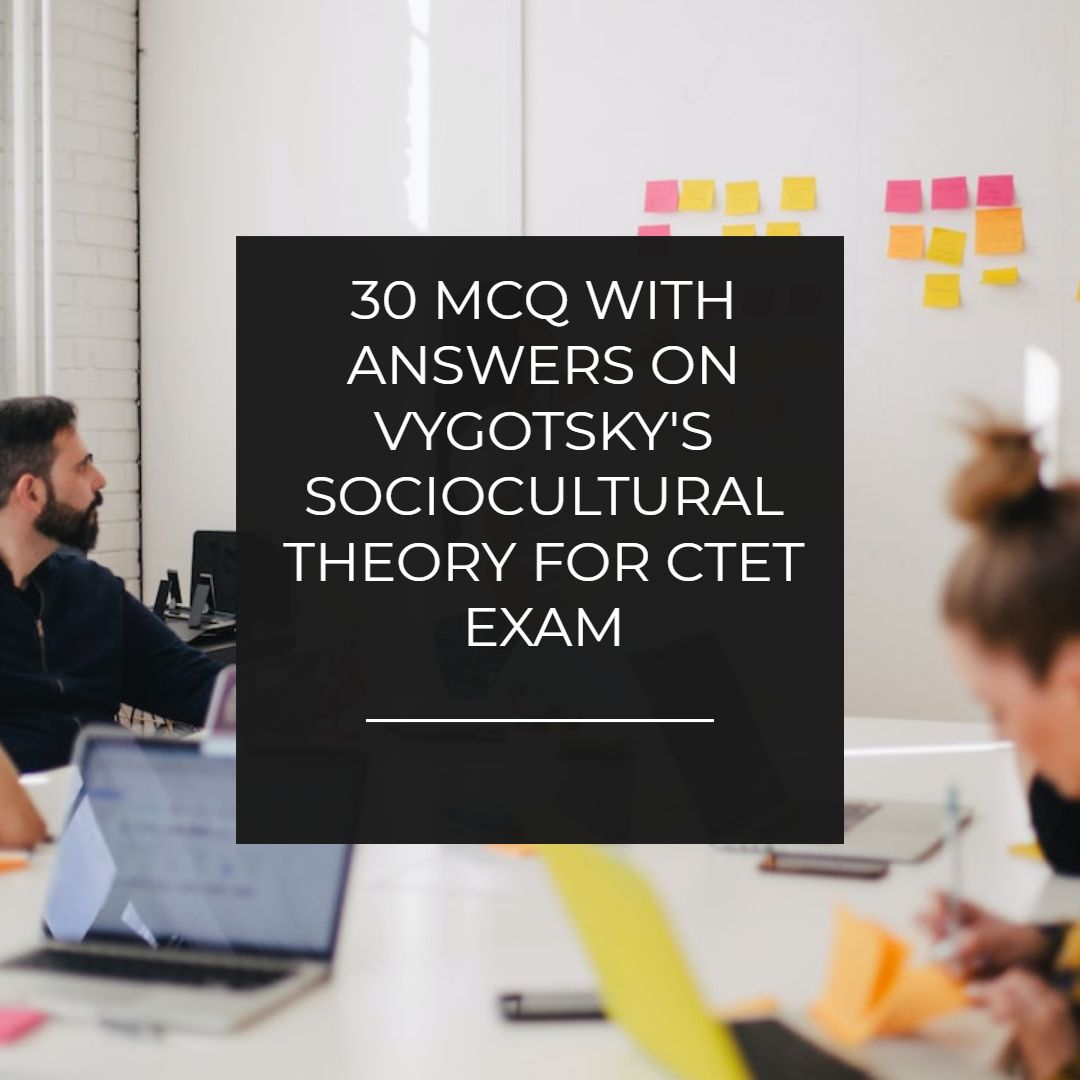30 MCQ With Answers on Child Development and Pedagogy for CTET Exam
30 MCQ With Answers on Child Development and Pedagogy for CTET Exam
Child Development and Pedagogy is an important topic for the CTET (Central Teacher Eligibility Test) exam. It assesses the candidates’ understanding of child psychology, teaching methodologies, and effective classroom management. This article will provide you with 30 sample questions and answers OR MCQs that will help you prepare for the CTET exam on Child Development and Pedagogy.

30 multiple-choice questions with answers on child development and pedagogy for the CTET exam:
Which of the following is not a domain of child development?
a) Cognitive
b) Physical
c) Emotional
d) Financial
Answer: d) Financial
The term "nature vs. nurture" refers to the debate about:
a) The role of genetics versus environmental influences on development
b) The influence of peers versus family on a child's development
c) The impact of culture versus individual experiences on learning
d) The importance of natural abilities versus acquired skills in education
Answer: a) The role of genetics versus environmental influences on development
According to Piaget's theory, which stage occurs during the ages of 7 to 11 years?
a) Sensorimotor stage
b) Preoperational stage
c) Concrete operational stage
d) Formal operational stage
Answer: c) Concrete operational stage
Which of the following is an example of gross motor skills?
a) Drawing a picture
b) Tying shoelaces
c) Riding a bicycle
d) Solving a math problem
Answer: c) Riding a bicycle
Which of the following is an example of a fine motor skill?
a) Jumping rope
b) Throwing a ball
c) Playing the piano
d) Climbing a tree
Answer: c) Playing the piano
A child's ability to control and regulate their emotions is known as:
a) Emotional intelligence
b) Cognitive development
c) Social competence
d) Moral reasoning
Answer: a) Emotional intelligence
According to Erik Erikson's theory, the primary psychosocial crisis during adolescence is:
a) Trust vs. mistrust
b) Autonomy vs. shame and doubt
c) Initiative vs. guilt
d) Identity vs. role confusion
Answer: d) Identity vs. role confusion
The process of providing support and assistance to help students reach their potential is known as:
a) Differentiation
b) Accommodation
c) Inclusion
d) Scaffolding
Answer: d) Scaffolding
Which of the following teaching methods focuses on hands-on experiences and active learning?
a) Direct instruction
b) Experiential learning
c) Inquiry-based learning
d) Lecture-based learning
Answer: b) Experiential learning
According to Vygotsky's sociocultural theory, learning is facilitated through:
a) Independent exploration
b) Individual reflection
c) Social interaction
d) Self-directed study
Answer: c) Social interaction
The process of adapting one's cognitive structures to fit new information is known as:
a) Accommodation
b) Assimilation
c) Equilibration
d) Adaptation
Answer: a) Accommodation
Which of the following is an example of positive reinforcement?
a) Adding extra homework as punishment
b) Giving a sticker for completing a task
c) Taking away recess as a consequence
d) Ignoring unwanted behavior
Answer: b) Giving a sticker for completing a task
In the context of classroom management, which of the following is an example of intrinsic motivation?
a) Offering rewards for good behavior
b) Threatening with punishment for misbehavior
c) Encouraging students to set personal goals
d) Imposing strict rules and regulations
Answer: c) Encouraging students to set personal goals
Which of the following is an example of a formal assessment?
a) Observing students during group work
b) Conducting a standardized test
c) Collecting student portfolios
d) Using a rubric to evaluate presentations
Answer: b) Conducting a standardized test
The process of identifying and addressing the individual needs of students with diverse learning abilities is called:
a) Inclusion
b) Differentiation
c) Mainstreaming
d) Remediation
Answer: b) Differentiation
Which of the following theorists is associated with the zone of proximal development?
a) Jean Piaget
b) Lev Vygotsky
c) Erik Erikson
d) Lawrence Kohlberg
Answer: b) Lev Vygotsky
The concept of multiple intelligences was proposed by:
a) Howard Gardner
b) Albert Bandura
c) B.F. Skinner
d) Abraham Maslow
Answer: a) Howard Gardner
The ability to understand and share the feelings of others is known as:
a) Emotional intelligence
b) Empathy
c) Self-awareness
d) Social competence
Answer: b) Empathy
Which of the following is an example of a metacognitive strategy?
a) Taking notes during a lecture
b) Repeating information aloud
c) Summarizing key points
d) Setting goals and planning study time
Answer: d) Setting goals and planning study time
Which of the following is an example of a formative assessment?
a) Final exam
b) Homework assignment
c) Project presentation
d) Midterm test
Answer: b) Homework assignment
Which of the following is not a component of the Montessori method?
a) Individualized instruction
b) Mixed-age classrooms
c) Teacher-directed activities
d) Hands-on learning materials
Answer: c) Teacher-directed activities
According to Maslow's hierarchy of needs, which needs must be met first before higher-level needs can be fulfilled?
a) Safety needs
b) Belongingness needs
c) Self-esteem needs
d) Physiological needs
Answer: d) Physiological needs
Which of the following is an example of a visual learning style?
a) Listening to an audio recording
b) Reading a textbook
c) Discussing ideas with others
d) Participating in a hands-on activity
Answer: b) Reading a textbook
The process of promoting equal opportunities and access to education for all students is known as:
a) Differentiation
b) Special education
c) Inclusion
d) Mainstreaming
Answer: c) Inclusion
According to Jean Piaget, children construct their understanding of the world through:
a) Schemas
b) Conditioning
c) Imitation
d) Reinforcement
Answer: a) Schemas
Which of the following is an example of an open-ended question?
a) What is the capital of France?
b) When did World War II end?
c) How would you solve this problem?
d) What is the chemical formula of water?
Answer: c) How would you solve this problem?
Which of the following is an example of a culturally responsive teaching practice?
a) Using only English language materials in a diverse classroom
b) Ignoring students' cultural backgrounds in instruction
c) Incorporating diverse literature and perspectives into lessons
d) Treating all students the same regardless of their cultural background
Answer: c) Incorporating diverse literature and perspectives into lessons
The process of breaking down complex skills or tasks into smaller, more manageable steps is called:
a) Chunking
b) Sequencing
c) Scaffolding
d) Modeling
Answer: a) Chunking
The process of observing and recording behavior in a systematic and objective manner is known as:
a) Assessment
b) Evaluation
c) Documentation
d) Observation
Answer: d) Observation
The concept of social learning theory was proposed by:
a) Jean Piaget
b) Albert Bandura
c) Lev Vygotsky
d) Lawrence Kohlberg
Answer: b) Albert Bandura
I hope these questions and answers on child development and pedagogy are helpful for your CTET exam preparation!



Excellent blog…this article very helpful for all of us…